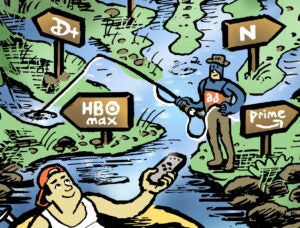 “The Sell Sider” is a column written for the sell side of the digital media community.
“The Sell Sider” is a column written for the sell side of the digital media community.
Today’s column is written by Chris Cummings, CEO at PubNation.
Ad ops has traditionally focused on one metric: revenue. Revenue is the ad ops’ North Star, the guiding light, the arbiter of decisions. It’s how publishers evaluate, prioritize and judge the effectiveness of what we do.
Considering whether to add a new ad partner? Analyze the impact on revenue. What about trying a new ad format? Lock in the CPM. Should we introduce another ad unit to the page? Determine the effect on the bottom line.
But clearly, revenue is not enough. Without being able to measure the cost of ad changes, publishers may be making decisions that increase revenue in the short term but lower profitability in the long term. And, just as importantly, publishers may be leaving significant money on the table.
Decision-Making In The Dark
Imagine you are a publisher in a team meeting and an engineer proposes adding a new 300×250-pixel ad unit to the right sidebar of your website. The business manager suggests that this could lead to significant revenue improvements. But the designer says the user experience will suffer and the product manager believes page views will decline. Another engineer notes the ad unit will slow down the site.
Hearing all of these critiques – worse user experience, fewer page views, slower site – the original engineer proposes the exact opposite: Let’s remove an existing 300×250 from the sidebar. The room looks shocked. The ad units are industry standard and the move would kill revenue, they say. The original engineer asks if anyone has any data on how much these ads actually impact user experience, ad speed or page views.
The room falls silent.
A Framework For Measuring The Cost of Ads
Decisions on whether to change ad setups are made constantly. Teams choose ad formats, units, partners, campaigns, even specific creatives. Clarifying the costs and benefits of these ad-related decisions can dramatically improve decision-making. Conceptually, sites should be focused on long-term value, as short-term bumps in revenue may hide future damage to brand, user engagement and traffic.
But to understand long-term benefits and costs, it’s necessary to look at early indicators of changes, including shifts in engagement, feedback, speed and security.
Net Revenue
Measuring impact on revenue across all ad units – even ones that did not change – can account for unintended gains or losses. If a publisher were to test adding a new ad unit to the sidebar, for example, it’d be important to look not only at the revenue from the unit itself, but also the corresponding decrease in CPMs from the other ad units.
The net impact on revenue – which accounts for both the benefits of the change in a particular unit and the costs of the change to other units – will provide a better understanding of the net benefits of a change.
Example metrics: CPM per page view, revenue per user
User Engagement
It’s important to measure changes in key engagement metrics for a site. Every site on the Internet faces a trade-off between ads and user engagement. Too often sites are following the herd in how they approach their ad setups.
A famous example of bucking the trend is Google’s ad-free home page. Google has likely found that engagement (searches) is higher if the page is ad free, and overall it’s better to have higher engagement than increased monetization from ads on the home page. To assess what’s right for a site, publishers must measure engagement.
Example metrics: page views per visit, seven-day repeat visit rate, signups, searches, shares
User Feedback
Publishers should also measure what users say about the specific ads. Users particularly loathe ads that expand to cover the page or play audio automatically, but also share feedback quite often on ads that are slowing down the site or displaying inappropriate content. The most targeted way of getting specific feedback on ads is by allowing direct feedback on specific ads, but it’s also possible to read through more general user satisfaction surveys to identify changes in user’s overall opinion of the site.
Example metrics: negative ad feedback, change in overall user satisfaction
Speed
Measure the impact a change in the ad setup has on site performance. A wealth of research has established that faster sites garner more page views, more engagement, and more purchases. In many cases, the engineering team is busy trying to shave off milliseconds on the back end but the ads are loading huge, slow-loading files on the front end. Both the ad ops team and the engineering team end up flying blind to the problem. The first step to regain control of site speed is to measure the impact of ads on the site.
Example metrics: page load times, speed index, time to view page content (using the filmstrip view on webpagetest.org), page download size (especially on mobile)
Privacy And Security
Finally, publishers should measure the impact of changes in their ad setup on privacy and security. One of the top three reasons users install ad block is because of concerns over tracking. Nearly all sites have a privacy policy in place that explains that data will be collected for the purpose of serving ads. Most sites, however, don’t actually know what data is collected by third parties, how the data is being used or even which third parties are collecting the data. Moreover, many sites struggle to ensure that third-party exchanges are not serving ads that contain malware or automatic redirects. To regain the trust of users, publishers must start measuring the impact of third-party ads on privacy and security.
Example metrics: number of trackers, 100% passage of malware scans, compliance with Ad Choices and Tag
An Investment With Big Payoffs
For most publishers, the choice of what ads to run on the page is among the most important business decisions. Measuring the cost of ads requires an investment. But the reward is smarter decisions.
That means fewer decisions that trade short-term gains for long-term losses and more decisions that deliver long-term gains for little or no loss. As a simple test of whether a site has the information to make smart decisions, publishers must ask themselves if their team should add another ad unit to the sidebar? Should they remove one? How do they know?
If this is hard to answer, it might be time to improve the measurement of the cost of their ads
Follow PubNation (@joinpubnation) and AdExchanger (@adexchanger) on Twitter.













